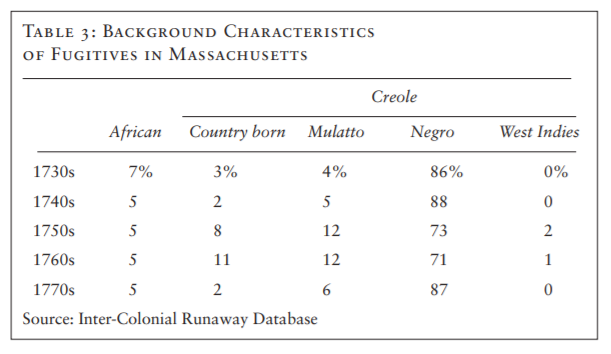I assume the table you have been given is taken from A Prince among Pretending Free Men: Runaway Slaves in Colonial New England Revisited. If so, that table appears as Table 3 on page 98:

African slaves were slaves born in Africa.
Country born slaves were born in the United States.
Mulatto meant mixed race. Mulatto slaves were generally also Country born. As Antonio T. Bly, the author of that paper, put it:
"... mulatto fugitives proved the most peculiar of the countryborn lot. As social and racial outcasts they were a different kind of fugitive. Through no fault of their own, they embodied the taboo of interracial sex.
To clarify some of the apparent confusion in the comments.
The categories are not exclusive. This is made clear in that passage quoted from the paper above, where is states explicitly that "mulatto" fugitives were also "countryborn".
So, for example, in the 1730, 86% of the notices described the fugitive as "Negro", 4% described the fugitive as "Mulatto", etc. But note that only 3% described the fugitive as "Country born" (although we should understand that the fugitives described as "Mulatto" were also "Country born", even though that wasn't explicitly stated on the notices).
The issue is how they were described in the fugitive notices (and so recorded in the database). I note that the numbers are all rounded to the nearest integer, so there were also, presumably, other descriptive terms that were used so infrequently that they were not allocated a category by modern scholars.
The point being that the 17th-century slave-owners weren't picking a label from a prescriptive list, and the labels that were used weren't necessarily used with the precision that modern scholars would like.
